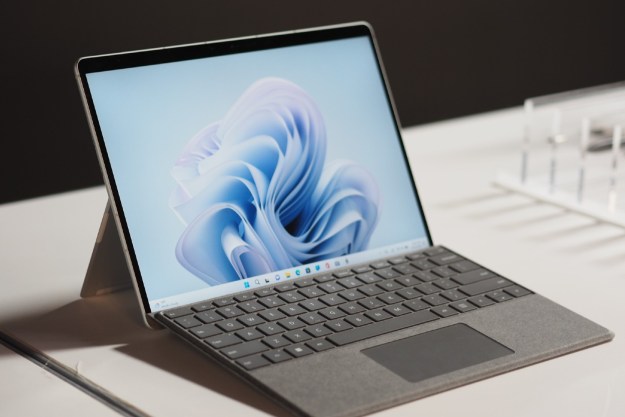Virtual reality hasn’t met its most discerning audience, the consumer.
But all was not as it seemed.
After the initial shock of the experience subsided, I began to notice cracks in the virtual world. The resolution wasn’t as sharp as I would have liked. There was also the question of motion sickness. Within minutes, I could suddenly feel a migraine coming on. VR’s potential was clearly incredible, but the drawbacks were equally formidable.
Not worth the headache
Three weeks ago, I sat down to test out Eve: Valkyrie a second time, once on Oculus Rift, and then on Sony’s forthcoming PlayStation VR. The game was stacked with a bunch of new features and modes, prettier than before, and I was able to compete with a room full of people. But despite being upgraded to a 1080p resolution, it still looks rough.
Whether that’s a limitation of the hardware or the software is up for debate, but after reaching out to Eve: Valkyrie‘s lead designer himself, Andrew Willans, it’s my contention that Oculus Rift is to blame.

Without even asking about the resolution issues I’ve experienced with the Rift, Willans volunteered that from a UI design perspective, one of the developer’s “bigger challenges was adapting to the ever increasing resolution of the HMD displays. Finding the sweet spot at which text can be read clearly.”
From the information Willans offered me, optimization was a huge focus for CCP in its production of the Rift’s flagship title. Unfortunately, even with Oculus’ work on upping the resolution, floating text on the head-mounted display was hard to read. It looked like I was staring at an old console game, a foot away from a TV screen.
And my ongoing quarrel with VR-induced motion sickness continued. At GDC, I was only allowed a few minutes with the Oculus Rift, and I’d already begun to feel symptoms of nausea. My private LAN party with CCP was a much longer experience, clocking in at about an hour. By the end of our session, I was burdened with excruciating pain in both my head and stomach that lasted me the rest of the day.
Oculus Rift, and VR as a whole, has a long, rutted road ahead of it. It still hasn’t met its most discerning audience, the consumer.
VR could still fail commercially, for the same reasons as stereoscopic 3D before it. It requires a specific set of hardware. It’s wearable technology that many are unfamiliar with. It’s expensive. Developers like CCP and Sony must communicate why playing games on a headset is, and that’s a challenge.
Alt-gaming
According to Andrew Willans, VR may meet that challenge by side-stepping it. He doesn’t view VR as a direct competitor to traditional games and media enjoyed on a flat screen, but instead as a compliment best suited for new experiences.
“Eve: Valkyrie was built from the ground up for VR, so in terms of game design we had a good idea of what features we wanted to include,” Willans told me. “The real challenge then comes down to implementation and testing within VR.”

He informed me that, in developing the flagship Oculus Rift launch title, certain game modes simply won’t work in a VR environment. Eve: Valkyrie‘s “Control,” for example, is a traditional capture-the-flag mode that, in any conventional first person shooter, might harvest a few campers along the way. VR, on the other hand, is about exploration and the opportunity to experience new worlds. For Eve, this means being on the move constantly.
VR’s potential was clearly incredible, but the drawbacks were equally formidable.
“Our game is all about the fluidity of aerial combat,” Willans told me. “The last thing we wanted was for players to simply park up in space and wait for the action to come to them.”
Eve: Valkyrie tries to solve this problem by letting players deploy drones near certain objectives to do the camping in their place. Meanwhile, the players themselves get to continue engaging in fast-paced action combat. The fact that an integral slice of the game had to be modified in order to fit the standards of VR means Oculus Rift won’t be replacing our current gaming setups any time soon.
Virtual reality must prove its worth
If anything, VR is a supplement for an already established, nearly $100 billion gaming enterprise. Even so, major technical achievements are needed to ensure virtual reality is worth the price.
At this year’s PlayStation Experience, I waited in a three-hour line to try out Eve: Valkyrie once again, this time on PlayStation VR. The result as disappointing as with the Rift. Edges on nearby ships and HUD text were murky. Everything around me looked like an aliased image propelled directly off a Star Wars holo-projector.
Both Oculus Rift and PlayStation VR are set to be released in the next few months. Not much will change between now and “Q1 2016.” If there was ever a time to be concerned about the state of these two platforms as proof of concept to the consumer, that time is now.


